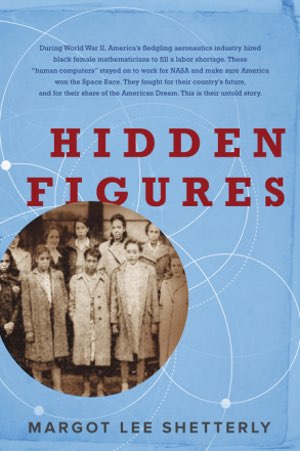Review: Hidden Figuresby Jeff Foust
|
| That work to confirm the calculations for Glenn’s flight, a key element of the movie, is only one small part of the book, near the end. |
There is much more to the story than that, though, as told in the book of the same name by Margot Lee Shetterly. Growing up in Hampton, Virginia, she was used to knowing people, including African Americans, who worked for NASA, and thought nothing of it. Only on a visit back home several years ago to visit family did she find out about the pioneering roles that a number of black women played working at Langley, for NASA and its predecessor NACA, in an era where science and engineering jobs were rare for both African Americans and women in general. That led to years of research to discover these women and learn their histories.
The story told in Hidden Figures starts during World War II, when Langley was responsible for critical aircraft research to support the war effort. The center had already hired many white women to work as computers, doing calculations to support the engineering work done elsewhere, but a labor shortage led Langley officials to cast a broader net and start hiring black women, creating a small but growing group that worked in a separate room at the center from their white counterparts.
Shetterly follows the career paths of several women, the best known of which is Katherine Johnson, the woman who made the calculations for Glenn’s flight (or, rather, confirmed those made by an electronic computer, reportedly at Glenn’s behest.) Johnson, now 98, received the Presidential Medal of Freedom for her work last year; NASA dedicated the Katherine G. Johnson Computational Research Facility at Langley earlier this year.
That work to confirm the calculations for Glenn’s flight is only one small part of the book, near the end. By then, Johnson, Dorothy Vaughn, Mary Jackson, and others had gradually won acceptance at Langley over the years, overcoming obstacles based on both their race and gender as they transitioned from a pool of anonymous computers to engineers and managers that worked alongside a predominantly white, male workforce. But despite the gradual integration, professional and otherwise, they experienced within the boundaries of Langley, they still faced segregation outside its gates.
| “I had known more that that number [five or six] just growing up in Hampton, but I even I was surprised at how the numbers kept adding up,” she writes, saying she’s identified almost 50 such women. |
Hidden Figures has some parallels with another book about women working at NASA (or its predecessor organizations), Rise of the Rocket Girls (see “Review: Rise of the Rocket Girls”, The Space Review, April 4, 2016) about early women working at JPL. In both cases, women were hired as computers, working separate from the other labs and offices at each center, but gradually moved into engineering positions in the lab thanks to changes in both society and technology. The difference is in life outside the lab: there was no segregation at JPL in Southern California, but also hardly any African Americans among the women working as computers there. The women of JPL had to deal primarily with gender bias; the women of Langley dealt with both racial and gender discrimination.
In addition to telling the tale of pioneering African American women who worked at NACA and NASA, some who are now finding long-overdue recognition, Hidden Figures is also a groundbreaking history work. Shetterly said she was encouraged by historians when she set out on the book, but most thought there were only a handful of such women—five or six, they estimated—who worked at Langley. “I had known more that that number just growing up in Hampton, but I even I was surprised at how the numbers kept adding up,” she writes, saying she’s identified almost 50 such women, and her “intuition” suggests there are perhaps 20 more that can be found with more research. That work has led to the Human Computer Project that plans to create a database of all the women mathematicians who worked at NASA and NACA.
The movie version of Hidden Figures, when it does come out, will likely take some liberties with the history: it is, after all, a drama and not a documentary. But the real story told on the pages of this book artfully explains the challenges these women faced, which makes their accomplishments and achievements all the more outstanding.
